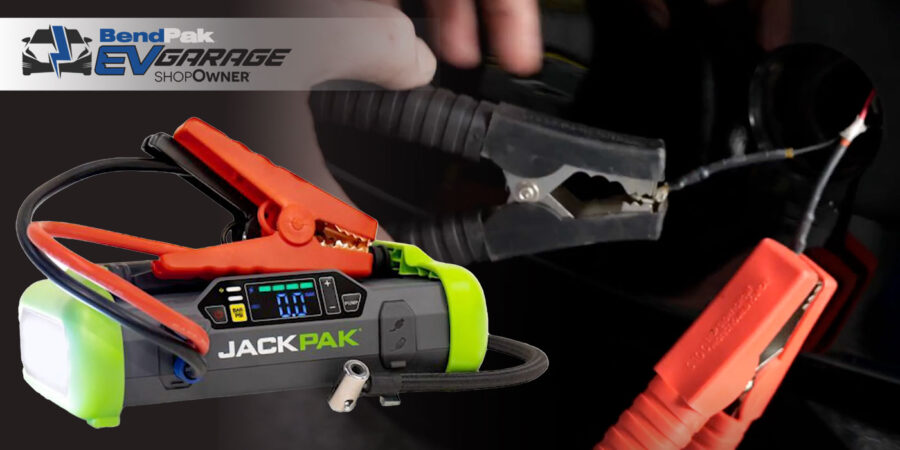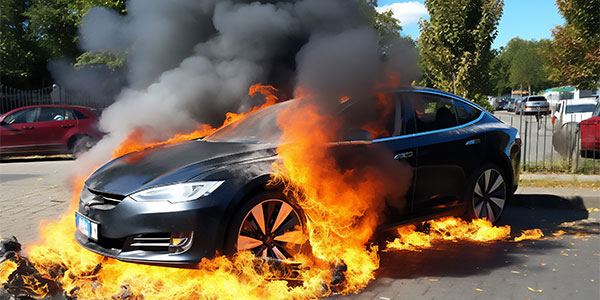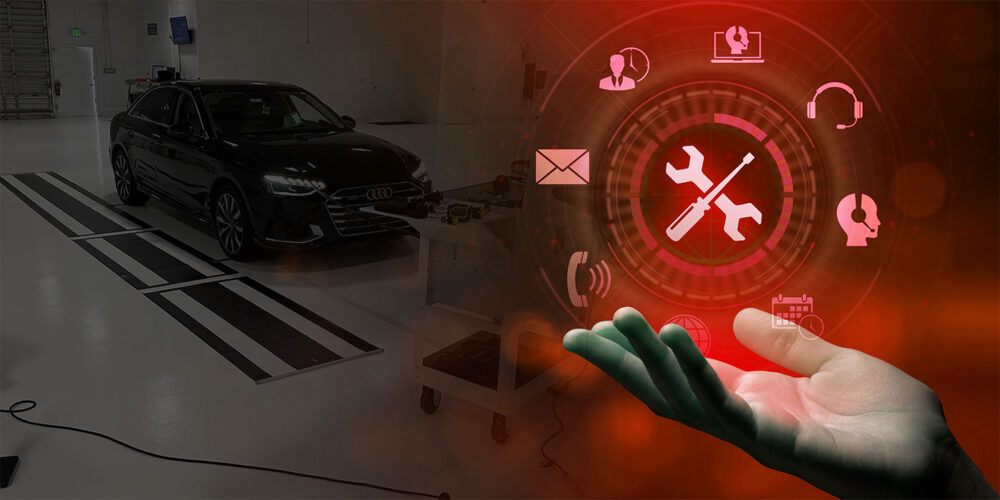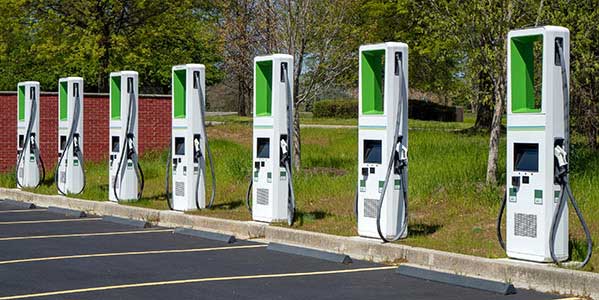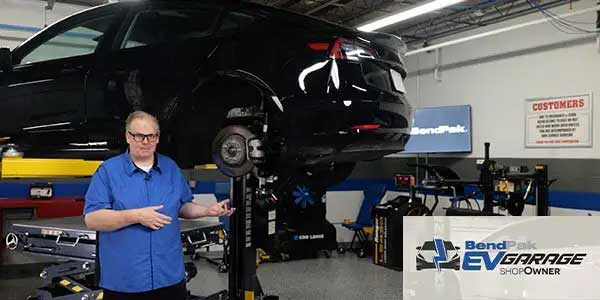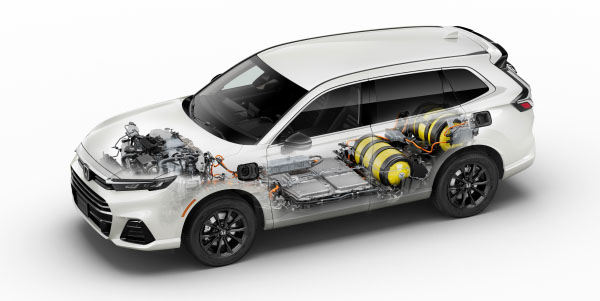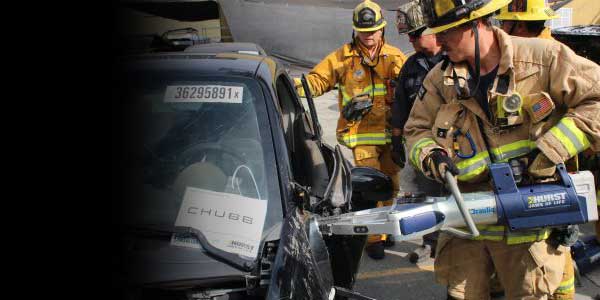 |
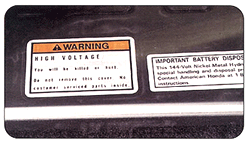 |
Question answered by: Mike West
Recently, the Sierra Club — the environmental organization that acts as the world’s conscience when it comes to issues like protecting the spotted owl, old growth forests and, of course, global warming — weighed in with a press release titled, “The Next Big Thing From Detroit.” No, it wasn’t about some innovative techno-wonder device that would replace the world’s nemesis, the automobile. It was an article predicting a request from the “Big Three” for a government bailout.
What the #*@! is going on? Since 1994, the United Auto Workers claim 100,000 less members and the auto industry’s profits fell from $8.4 billion to staggering losses of $4 billion in 2005. Yet Toyota posted profits of more than the Big Three combined for 2005. Do they know something the others don’t?
Let’s think about this … A couple years ago, Saudi Arabia posted a deficit of $72 billion. I know, it doesn’t seem possible, does it? Well, evidently you can have too many palaces with cascading waterfalls and bowling alleys with theaters in them, causing you to actually spend more than you take in.
Do you think financial markets keep a close eye on these trends? Well now, let me see, what is it that Saudi Arabia produces … oh yeah, that black stuff that comes out of the ground that the world can’t get enough of — oil. Needless to say, in a very short period of time, the Saudis are posting close to a $40 billion surplus. Oh, that’s right. The price at the pump went up. What a coincidence!
Of course, the Big Three don’t bother with such facts. They’re a market-driven group. They give the “people” what they want — Excursions, Suburbans, Yukons and Hummers. You know, nice, environmentally friendly commuter cars. A little pricey at the pump but that’s what the “people” want.
Gee, what happened? Even the long deals and employee discounts couldn’t convince the “people” to buy and then spend the really big money to make sure the Saudi royal family could maintain the lifestyle they’ve grown accustomed to? Those fickle, fickle “people” apparently just aren’t buying those gas-guzzling monsters. So last year, Toyota made $1,600 on every vehicle it sold, while GM lost $2,300 on every vehicle it sold. Wow! That’s not good for the Big Three. I wonder what they could have done differently?
We now know that this is really just the tip of a large iceberg. Ford has announced closings of about 14 plants and 25 to 30,000 employees will be laid off, while GM follows suit.
Daimler-Chrysler? I’m not too sure, but I do know the German auto industry is in crisis also.
All this turmoil has laid the foundation for the Hybrid Electric Vehicle (HEV) in a way that no environmental or government mandate could. The free market at work. If gas costs $2.50 a gallon at the pump, what better way to sell cars than to produce vehicles that use less gas? Toyota (and Honda, too) saw the logic in this and invested in a big way in HEVs. They’re here and they’re here to stay for quite some time. I just hope the Big Three will be here, too. America won’t be the same if they’re not.
All that said, I should probably get started addressing Bob’s actual question about the safety issues related to working on hybrids. But to do that, we have to first understand what a HEV is — and isn’t.
Why HEV and Not EV?
The state of California mandated that auto makers had to sell a certain percentage of zero emissions vehicles (ZEVs) by a prescribed date, which was extended a few times. ZEVs are basically electric vehicles (EVs) that have a limited range (50-70 miles) and top speed. They need to be recharged, and this, too, requires special considerations. It’s the old perpetual circle problem with an EV: to produce a longer range and more power, you need a heavier, larger battery, which consumes more power to haul around.
The ZEV idea is really a misnomer, too. If the battery must be recharged from the public power supply grid, well shoot! Where does the majority of it come from? Fossil fuel-burning power generation plants.
But forget all those eco-facts and questions that my mind likes to ponder because they don’t make any difference anyway. Why? Because nobody bought the mandated EVs. Let me rephrase that — the “people” didn’t buy them. Some public agencies did. And of course they did — there’s no profit motive involved there. You can pay public employees to hook up and disconnect EVs, and you can pay them to tow them back to home base when they exceed the state of charge (SOC).
But the profit-making companies and private individuals didn’t want or like them, so the vast majority were scrapped. Since 2004, no major auto manufacturers have produced an EV. That old “free market” said, “When you can’t even get the average consumer to change oil every 3,000 miles, how are you going to get them to charge up their EVs every 50 miles?” It ain’t gonna happen — and it didn’t. You can mandate all you want, but if nobody’s buying, it just isn’t going to work. Besides, the Japanese had a better idea …
The HEV has the high-voltage battery of the EV but has on-board charging capability. Big advantage! It also has a small, efficient internal combustion (IC) engine that assists in powering the HEV, depending on the SOC of the battery. It also turns the vehicle into a long-distance freeway speed cruiser, something an EV could never be. The small IC engine is very fuel efficient, and with the integrated motor assist (IMA) of the high-voltage electric motor and battery, it’s even more so.
How Does It Work?
Now for the “techno stuff.” For simplicity’s sake, let’s just say there are two types of HEVS: full hybrids and mild or moderate hybrids.
Simply put, the full hybrid is capable of electric-only propulsion, and the mild hybrid is not. Two examples of full HEVs are the Toyota Prius and 2005 Ford Escape. Examples of mild hybrids are the Honda Insight, Honda Civic and other Honda models.
A full HEV can be moved by either the electric motor or the IC engine, or a combination of both. This makes it more complex and more fuel efficient. The mild HEV has the electric motor assisting the IC engine whenever it’s moving.
Depending on the battery SOC, the IC engine will shut down when the vehicle stops at a light, conserving fuel. But A/C systems that are driven from the IC engine will prevent this automatic shutdown to allow the A/C to work. Toyota’s new Prius overcame this by installing an electric A/C compressor, so the new Prius will continue to provide A/C while stopped, with the IC engine off. Cool, huh?
Understanding HEV Batteries
The high-voltage batteries in the Honda, Ford and Toyota are Nickel Metal Hydride (NiMH) and have proven advantageous over lead acid or lithium batteries. Considerations for arriving at NiMH were cost, weight, better specific energy and power, and an enhanced life cycle over lead acid. NiMH has a life cycle as much as three to four times that of lead acid. These are good things.
However, the NiMH also brings with it some problems: It’s temperature sensitive — at more than 104 degrees Fahrenheit, the battery doesn’t charge well. And when it isn’t charging efficiently, it tends to heat up, which compounds the problem. It also has a relatively high self-discharge rate of about
30% per month when just sitting. And when a NiMH battery becomes completely discharged, there may be no way to recharge it, so it will have to be replaced. This is expensive.
Consider this: The 2001-2003 Toyota Prius uses the high-voltage battery and electric motor to start the IC engine. The high-voltage battery is recharged by running the IC engine and also driving the car. If the battery discharges to the point where you cannot start the IC engine to recharge the high-voltage battery, you may have to replace the battery. So the 2004 Prius uses the 12-volt auxiliary battery to start the IC engine. Good idea. (Nearly all HEVs have an auxiliary 12-volt
battery.)
The NiMH battery works at optimum per design, with neither a completely charged nor discharged SOC. Between 60% to 80% is the average operating SOC. Suggestion: If possible, start an HEV every two weeks if it’s at your shop for an extended stay. Let it run for 20 minutes and drive it, if possible.
The battery temperatures are controlled when the vehicle is operating, with air movement and supply and exhaust. Try not to expose the high-voltage battery to temperatures of 150 degrees Fahrenheit or more. This is not difficult, just different. Appreciate the fact and take precautions to prevent problems.
The high-voltage battery is recharged a couple of ways. The IC engine can drive a generator to recharge, or the braking power of the high-voltage motor can turn the motor into a generator — to reverse the electrical power (AC) through a converter (DC) and back into the high-voltage battery. Somewhat of a perpetual motion aspect, but not quite. You still have to keep adding gasoline to the IC engine or it stops.
Safety Concerns with HEVs
I went to an I-CAR class recently and heard a gray-headed tech say that he was working on a Prius and he wished the boss would have just sent it away. He was terrified. I asked him if he had attended the I-CAR Electric and Electric Hybrid Vehicles class, and he said that he had — and that’s what scared him.
Wow. I attended this class and felt reassured. In fact, I highly recommend it. Understanding how something works before you start working on it gives you the power to control your destiny and yes, safety.
Let’s just say that HEVs range in voltage from 42V to about 300V. Because the higher range could potentially kill you, it’s in your best interest to be informed and adequately protect yourself.
Study each manufacturer’s recommended procedure for disabling the high-voltage system and proceed accordingly. Do not assume that because you’re just fixing a dent that you can proceed as usual. It’s recommended that you disable the high-voltage system when the vehicle comes into the shop.
Once disabled, do not roll the vehicle around the shop. This can build up a high-voltage charge in the capacitors and cause damage to the vehicle or technician. Use roller plates or enable and then move and disable.
Lineman’s gloves are a must. These should be rated at 1,000 volts or higher and checked before each use for any air leaks. Use whenever working around the high-voltage system and battery.
The NiMH battery contains a highly caustic alkaline solution. This must be neutralized using protective clothing, eye protection and gloves. Because this is a base, use an acid solution to neutralize the spillage or leakage from a damaged NiMH battery. A boric acid solution is recommended. You can purchase this in powder form or solution from a hardware store, pharmacy or chemical distributor, or you can purchase a pre-packaged setup from a hazmat or battery jobber.
We keep boric powder on hand, mix it with water when needed and use a spray bottle for application. Use litmus paper to determine if you’ve neutralized the alkaline spillage properly. Flush the area with water to prevent any reaction with the metal body. Be thorough.
There’s usually more than one way to disable the high-voltage system. Depending on how the vehicle is wrecked, you may have to use an alternative to the primary method. The information is thorough and readily available. Read it.
The high-voltage cables are encased in orange conduit and insulating wrap. Test bare wires and connections to ensure that no voltage (.1 volts or less) is present before working in the area. The high-voltage system should be disabled before proceeding with any repairs. Make sure it’s using a high-voltage DVOM.
Proceed with Confidence
I’m a big fan of understanding how something works before you start working on it, so I strongly recommend attending I-CAR’s Electric and Electric Hybrid Vehicles (ALT01) class. By educating yourself, you can proceed with the confidence and assurance that you can safety repair HEVs.
Writer Mike West, a contributing editor to BodyShop Business, has been a shop owner for more than 30 years and a technician for more than 40 years. His shop in Seattle, Wash., has attained the I-CAR Gold Class distinction and the ASE Blue Seal of Excellence.
|
HEV Speak (a.k.a. Attack of the Acronyms)
AC — Alternating Current These acronyms are commonly used in technical bulletins and manufacturers’ instructions when servicing HEVs. It’s extremely important to follow the manufacturer’s recommended procedures for disabling the high-voltage batteries to work on these types of vehicles. |



